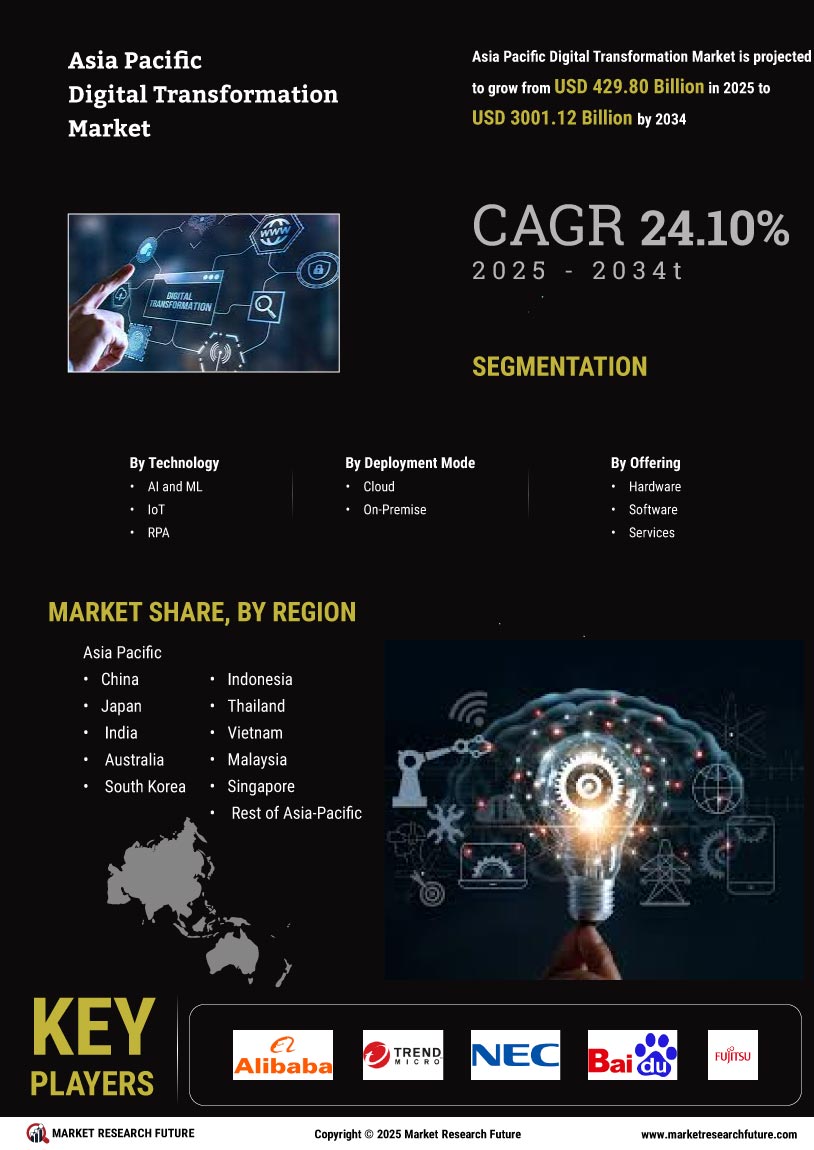China : Unmatched Growth and Innovation
China holds a commanding 45.0% market share in the APAC digital transformation sector, valued at approximately $45 billion. Key growth drivers include rapid urbanization, a robust tech ecosystem, and government initiatives like the Digital China strategy. Demand for cloud computing, AI, and IoT solutions is surging, supported by favorable regulatory policies that encourage innovation and investment in technology infrastructure.
India : Transforming Businesses and Lives
India commands a 30.0% market share in the digital transformation market, valued at around $30 billion. The growth is fueled by increasing internet penetration, a young population, and government initiatives like Digital India. The demand for e-commerce, fintech, and cloud services is on the rise, with supportive policies aimed at enhancing digital infrastructure and skills development.
Japan : Balancing Tradition and Technology
Japan holds a 20.0% market share, valued at approximately $20 billion. The market is driven by a strong emphasis on R&D, advanced manufacturing, and government support for digital initiatives. Trends show a growing demand for automation and AI solutions, particularly in manufacturing and healthcare, supported by policies promoting digital transformation across industries.
South Korea : Pioneering Digital Solutions
South Korea captures a 10.0% market share, valued at about $10 billion. The growth is propelled by high smartphone penetration, a strong gaming industry, and government initiatives like the Korean New Deal. Demand for 5G technology and smart city solutions is increasing, with a competitive landscape featuring major players like Samsung and LG leading the charge.
Malaysia : Strategic Growth and Investment
Malaysia accounts for a 5.0% market share, valued at around $5 billion. Key growth drivers include government initiatives like the Malaysia Digital Economy Blueprint and increasing foreign investments. The demand for e-commerce and digital payment solutions is rising, supported by regulatory frameworks that encourage innovation and digital skills training.
Thailand : Government Support and Innovation
Thailand holds a 4.0% market share, valued at approximately $4 billion. The growth is driven by government initiatives such as the Thailand 4.0 policy, which aims to promote digital innovation. Demand for digital marketing and e-commerce solutions is increasing, with a competitive landscape featuring local startups and international players.
Indonesia : Youth-Driven Market Dynamics
Indonesia captures a 3.0% market share, valued at about $3 billion. The market is driven by a young population, increasing smartphone usage, and government initiatives like 100 Smart Cities. Demand for fintech and e-commerce solutions is surging, with a competitive landscape featuring local giants like Gojek and Tokopedia.
Rest of APAC : Varied Markets and Innovations
The Rest of APAC accounts for a 4.47% market share, valued at approximately $4.47 billion. Growth is driven by diverse economic conditions and varying levels of digital adoption. Countries like Vietnam and the Philippines are emerging markets, with increasing demand for cloud services and digital solutions, supported by local government initiatives.


















Leave a Comment